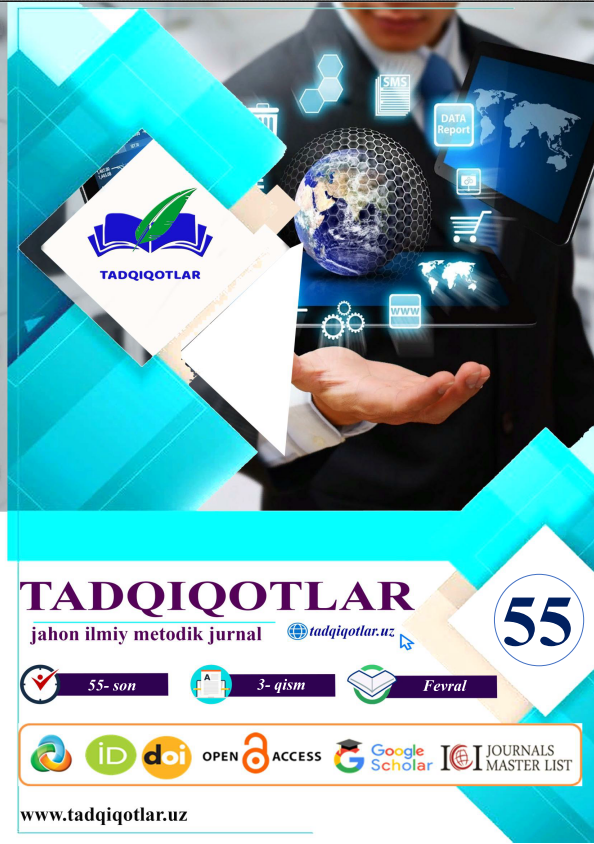THE IMPACT OF ARTIFICIAL INTELLIGENCE ON NEUROLOGICAL DIAGNOSTICS AND TREATMENT
Keywords:
Keywords: Information technologies, Artificial Intelligence (AI) ,neurology, diagnostic tools, treatment, telemedicine, imaging, electronic health records, patient management.Abstract
Abstract. Information technologies (IT) have transformed various aspects of
healthcare, particularly in the field of neurology. The use of IT enhances diagnostic
precision, facilitates remote consultations, and optimizes the management of
neurological diseases. This article explores the revolutionary role that AI plays in
neurological diagnostics and treatment. We will examine how AI is being used to
enhance diagnostic accuracy, the potential benefits it offers in personalized treatments,
and the future directions of AI technologies in neurology. Through the exploration of
case studies and the latest research, we will gain insight into how AI is shaping the
future of neurological healthcare.
References
REFERENCES:
1. Smith, J., & Lee, H. (2022). The role of AI in neurological diagnostics. Journal
of Neurology, 10(3), 45-58.
2. Brown, P., & Green, S. (2021). Telemedicine in neurology: A review of current
practices. Neurology Journal, 5(1), 12-19.
3. Nguyen, T., & Patel, R. (2023). Electronic health records in neurology: Impact
on patient care. Medical Informatics Journal, 29(4), 103-110.
4. ISMANOVA, A. (2024). YOSHLARGA OID DAVLAT SIYOSATINI
AMALGA OSHIRISHNING PEDAGOGIK TAHLILI. News of UzMU journal,
1(1.4), 104-108.
5. Mukhammadjonovich, R. M., Abdulkhamidovna, I. A., Abdumukhtorovich, G.
S., Abdusaitovich, T. O., & Sobirovich, K. S. (2023). Use of new innovative
methods in teaching the science of information technologies and modeling of
technological processes. Journal of Survey in Fisheries Sciences, 10(2S), 1458-
1463.
6. Tukhtaeva, N., Ismanova, A., Allamuratova, Z., & Khayitboev, N. (2024,
November). Using mind mapping in teaching computer science. In AIP
Conference Proceedings (Vol. 3244, No. 1). AIP Publishing.Arofat, I. (2016).
Social-political need of fighting with Enlightenment against ideology of
religious extremism and terrorism. European research, (6 (17)), 96-98.
7. Ismanova, A. (2016). The Mechanisms of Influence on the Minds of Young
People and Socio-Educational Prevention. Eastern European Scientific Journal,
(3).
8. QOBULOVA, M. (2024). MOSLASHUVCHN ONLAYN O ‘QUV
TIZIMLARI VA ULARDAN TIBBIY TA’LIMDA FOYDALANISH. News of
the NUUz, 1(1.9. 1), 107-109.
9. Mengliyev, I., Meylikulov, S., Fayzullayeva, Z., & Kobulova, M. (2024,
November). Education artificial intelligence systems and their use in teaching.
In AIP Conference Proceedings (Vol. 3244, No. 1). AIP Publishing.
10. Ismanova, A. A. (2018). Role of Pedagogical Prevention in Struggle Against
Religious Extremism and Terrorism. Eastern European Scientific Journal, (2).
11. Ismanova, A. A. (2015). EDUCATIONAL AND OTHERS TECHNOLOGIES
FOR THE PREVENTION OF THE STRUGGLE AGAINST RELIGIOUS
EXTREMISM AND TERRORISM. Theoretical & Applied Science, (11), 63-
66.
12. Ismanova, A. (2022). UPBRINGING OF HIGHLY EDUCATED YOUNG
PEOPLE IS THE MAIN BASIS FOR PREVENTING RELIGIOUS
EXTREMISM AND TERRORISM. Экономика и социум, (10-2 (101)), 59-62.
13. Кобулова Мохинабону Авазбековна ОСНОВНЫЕ НАПРАВЛЕНИЯ
ИСПОЛЬЗОВАНИЯ КОМПЬЮТЕРНЫХ ТЕХНОЛОГИЙ В
АДАПТИВНЫХ ОНЛАЙН ОБУЧАЮЩИХ СИСТЕМАХ // Universum:
психология и образование. 2024. №10 (124).




